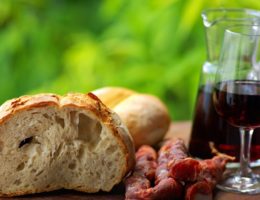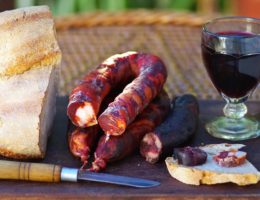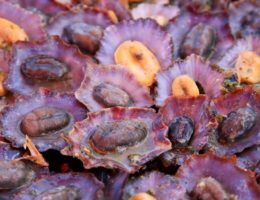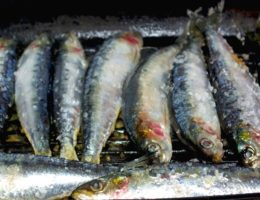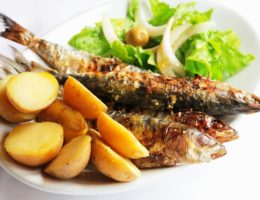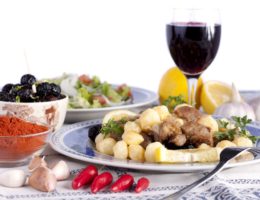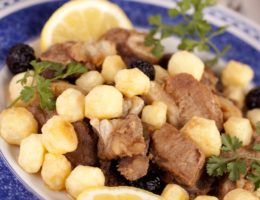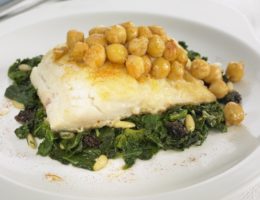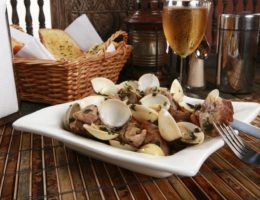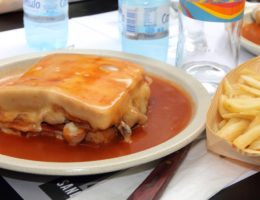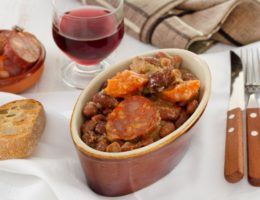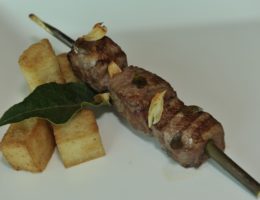
Travel One Portugal is a highly qualified travel incoming / dmc agency.
T. +351 291 707 280 Chamada para a rede fixa nacional
Email: portugal@travelone.pt
Location (click for map)
Lisbon . Madeira . Algarve
TRADITIONAL FOOD
The Portuguese gastronomy was born of what was available and of what was not, always finding a way to survive and turn the situation around when it came to adversities, shortage of goods and even religious persecutions. The Alheira from Mirandela (a type of traditional sausage) was invented by the New Christians (Jews converted by force in the 16th century) in Trás-os-Montes, so they could prove that they were true Catholics and they even ate pork. It happens that, despite the “alheira” having a similarity with pork “enchidos” (type of cured sausage), it is also smoked in the fireplace, but it is made with poultry meat, which backs the theory that the “alheira” was invented by the New Christians who, despite the appearances, would not give up their faith. It is also said that “alheiras” are not from Mirandela, but from its outskirts and from nearby villages. However, it has the city’s name as it was where it was sold.
Nowadays its production is industrial and it is easy to find “alheiras” all over the country, but they are not as good as the ones made in Trás-os-Montes. In fact, the habits have generalised the gastronomy and due to this, it is not difficult to find sheep’s milk cheese from Serra da Estrela in a supermarket. It is not the same thing as eating this cheese in Seia or Gouveia, towns in Serra da Estrela where the cheese’s flavour is more authentic. Made from sheep’s milk, it has been produced since the 12th century resulting in a white and buttery cheese that is the most popular in the country. This proves once more that in Portugal the gastronomy had its origin on what the nature provided. And, in Serra da Estrela the sheep pasture was during years an important way of life and the upkeep of the people.
In the South, in the Alentejo plains, the school shark soup with olive oil, coriander and hard bread gained fame. Part of the shark family, the school shark endured its transportation from the seaside to the countryside and was a cheaper type of fish. It is said that the recipe origin traces back to Algarve, but the truth is that it was Alentejo’s imagination that gave it its name. And, in Alentejo the recipe was adapted. When there was shortage of school shark, codfish was used, but for several years in periods of great scarcity, the rural workers took a similar soup when going to work in the fields. Without school shark or codfish, using just bread, garlic and olive oil, this was known as the white soup.
In Portugal soups are very simple, showing well our past and the ways to trick hunger and the lack of diverse ingredients as well. One soup that has these characteristics is the Caldo Verde. Having its origins in the North region, the Caldo Verde is made with onion, potato and collar greens and it is served with a little of olive oil and some “chouriço” slices. This soup is recommended for the main course or supper. It is common to eat caldo verde at the end of a night out.
The codfish is part of the Portuguese culinary and history and the historic records show that in the 14th century, fishermen sailed to the seas of England to catch the most common fish in the Lusitanian cuisine. Additionally, the coast was abundant in salt and this was highly convenient to maintain the codfish proper during months. Nowadays the codfish you can find is still dried and salted, washed in water several times just like in the Middle Ages, and it is cooked in various ways, always with olive oil. Each recipe has a name and, according to popular knowledge, the codfish “à Brás” got this designation from the name of the owner of a “tasca” (Portuguese pub) in Bairro Alto, Lisboa. He was the creator of this typical dish.
Made with shredded codfish, fried potato sticks, olives and chopped parsley, the codfish “à Brás” competes against an incredible amount of other codfish recipes that may vary according to region. From Porto came the codfish “à Gomes Sá” (Gomes Sá was a cook in a prestigious restaurant). This recipe includes codfish flakes, sliced potatoes, onion and egg and it is baked.
There is another recipe, also born in Porto, that is most recent, the codfish “à Zé do Pipo”, which was created in the ‘60s. Once more, the recipe has the name of its creator, the owner of the Zé do Pipo restaurant. Besides the codfish, this recipe has onion, olive oil, mayonnaise, mashed potatoes and bay leaves and it is toasted in the oven. Though Portuguese do not forego codfish (there are some who say it is not quite fish), the truth is that there is room for another delicacies from the sea in homes and restaurants. In Portugal, snacks, which are little doses of food eaten with bread, wine or beer, while talking or watching a football game, are extremely popular.
The clams “à Bulhão Pato” are in that snack list and are served in “marisqueiras” (seafood restaurants) and “tascas” as a starter or main course. The main ingredients are clams and coriander. This was served in the 19th century as a main course and was a popular dish in the bohemian scene in Lisbon. Bulhão Pato was not a cook, he was a poet and he mentioned these clams in a poem.
The grilled sardines, according to popular knowledge, should only be eaten between May and August, which are the months when sardines are in their best condition regarding flavour and texture. Traditional in Lisbon and Setúbal, nowadays they are eaten all over the country especially in June for the occasion of “Santos Populares” (popular saints): Saint Anthony, Saint John and Saint Peter. Following the tradition they are grilled in the charcoal and eaten on top of a bread slice, with salad, grilled bell peppers and sangria.
The seafood rice is part of every “marisqueira”’s menu in the country and it comes from Leiria. Everyone that has already tasted this dish knows that it should have a strong taste of tomato, coriander, prawn, clams, lobster and crab. And, it should be served hot, still with the stock.
In Bairrada (in the Central North region) the suckling pig is more than a reason for the tourist to stop by as it is indeed unique. The suckling pig is roasted in a stick, almost always made of dried pine wood, for two hours and seasoned with a salt and pepper paste. Given the uniqueness of this dish the Mealhada municipality has imposed rules to the restaurants regarding its preparation, thus allowing the quality standards to be kept in all of them.
In Alentejo the gastronomy has its origin in the people’s needs and the açorda is the base for many other richer and more caloric dishes. “Açorda” is made with water, salt, olive oil, garlic, coriander and pennyroyal. While this combination is boiling, eggs are pouched and a slice of bread is laid in it. It is served according to taste: there are people who like to make the bread crumble slowly and also the ones who like to soak it at once.
In Algarve, between Tavira and Vila Real, the clams “xarém” is the typical dish. The term “xarém” has Arab origins and it is the designation of the famous maize and bean clams porridge. Nowadays, ground maize especially prepared for this recipe can be found in the shops. In the past the maize was grounded and sifted a little while before being cooked. In this dish the bacon and lard are absolutely essential.
In the Central region, in the seaside, the chanfana is a dish for weddings and baptisms and takes hours to cook. This goat roast goes into the oven in a black pot made of clay, with Bairrada wine and it cooks for about four or five hours. In some occasions, lamb may substitute the goat. This dish was finalist in a recent contest, the Seven Wonders of Portuguese Gastronomy.
There is nothing more Portuguese than the cozido à portuguesa. This stew is made with different kinds of meats such as chicken, pork and beef, vegetables such as cabbages, carrots and potatoes and “enchidos”, such as “morcela”, “chouriço de sangue”, “farinheira” and “chouriço de carne” (various smoked and/or blood sausages types). Usually it is served a platter with all of these ingredients. It is a rich dish recommended for the cold weather days.
The tripas à moda do Porto is one of the city’s ex libris. The people of Porto are known as “tripeiros” due to this dish made of tripe, pork and white beans. The history tells that this tripe dish has its origin in the kindness of the people. There are some who say that it was during the war with Spain in the 14th century, others say that was during the Age of Discoveries and there is even some who suggest that it was during the Liberal Wars. However, it is certain that the “portuenses” (people of Porto) gave the meat to other parts of the country to help people while keeping the tripe to themselves. Today it is an inevitable dish in Portuguese gastronomy.





